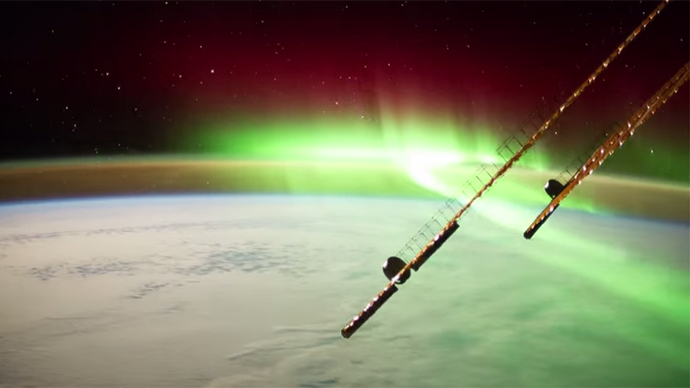6 months of Earth in 6 mins: Astronaut shares ISS voyage in stunning time-lapse video

A German astronaut has made a Christmas gift for all space lovers by combining thousands of photos he took during his ISS mission into one 4K-quality video. The six-minute clip captures the drama and beauty of planet Earth viewed from orbit.
European Space Agency (ESA) astronaut and social media celebrity
Alexander Gerst returned from a six-month mission on the
International Space Station, where among his other duties he took
12,500 photos of Earth and space.
The photos included images of the Milky Way, the auroras,
lightning, cities at night, and twinkling lights following the
path of the river Nile in Egypt.
Some of the video action highlights include a robotic space arm
extending to grab hold of a Cygnus spacecraft (1:35) and then
releasing its capture for its homeward journey at 4:50. The video
wraps up with one last incredible aurora – one of the many the
astronaut observed.
Gerst shared many of the images on Twitter over the past year during his time aboard the ISS, but seen all together in Ultra HD quality they now really convey the impression of awe astronauts often describe while in space.
4 Months in orbit. Feels like a second #home now. #ISS#BlueDotpic.twitter.com/hMaszthJQ8
— Alexander Gerst (@Astro_Alex) September 30, 2014
“Seen from a distance, our planet is just a blue dot, a fragile spaceship for humankind,” Gerst said in a written statement. “We need to understand the universe we live in to protect our home.”
The #Nile river sticks out even at night. #BlueDotpic.twitter.com/AqPs4qruuo
— Alexander Gerst (@Astro_Alex) October 16, 2014
Gerst is a geophysicist and volcanologist. During the six months aboard the ISS he and five engineers conducted 40 different experiments, covering materials physics, human physiology, radiation biology, solar research, biotechnology, fluid physics and astrophysics, as well as technology demonstrations.
When I lie in my sleep station, my head is only 20 cm from the base of the robotic arm in this picture. #aurorapic.twitter.com/FnGYOYIy0g
— Alexander Gerst (@Astro_Alex) October 26, 2014
The mission was called Blue Dot after the American astronomer Carl Sagan’s description of distant Earth as “a pale blue dot” as seen on a photograph taken by NASA’s Voyager probe six billion kilometers from our planet.













